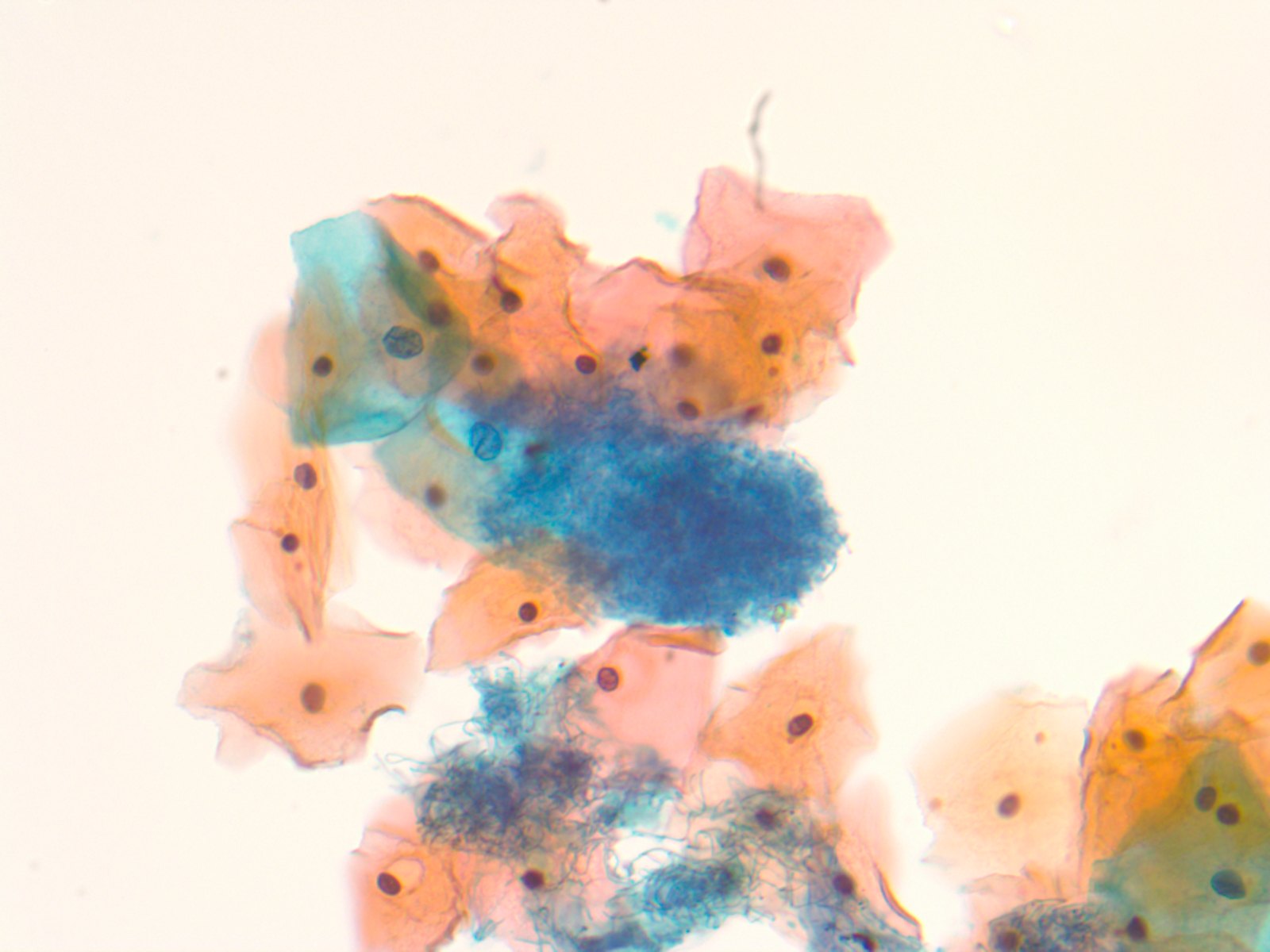Table of Contents
Definition / general | Terminology | Epidemiology | Etiology | Clinical features | Treatment | Microscopic (histologic) description | Cytology description | Cytology images | Differential diagnosisCite this page: Hasteh F. Actinomycosis. PathologyOutlines.com website. https://www.pathologyoutlines.com/topic/cervixactinomycosis.html. Accessed April 16th, 2024.
Definition / general
- Usually caused by Actinomyces israelii, a gram positive anaerobe
- Associated with intrauterine devices (Obstet Gynecol 1996; 87:142), with colonization rate of 11%; increases with duration of use (J Reprod Med 1994;39:585, IPPF Med Bull 1983;17:1)
- Actinomycetes normally reside in the female genital tract, so presence does not indicate disease (Am J Obstet Gynecol 1999;180:265)
- Less common than pseudoactinomycotic radiate granules that form around microorganisms or biologically inert substances
Terminology
- Also called "dust bunnies" or "Gupta bodies"
Epidemiology
- Rarely identified in Pap Test (< 1%)
- Can be found in culture of 25% of asymptomatic patients
Etiology
- Actinomyces Israeli is most common subtype (normal flora of the mouth and bowel)
- Associated with IUD (common) or rarely with other objects (pessaries, tampon)
- Copper containing IUD and long term use are major risk factors
Clinical features
- Asymptomatic
- Malodorous brown discharge
- Pain with invasive disease and PID (pelvic inflammatory disease)
Treatment
- Removal of IUD for asymptomatic women
- Removal of IUD and antibodies for symptomatic women
Microscopic (histologic) description
- Tangled clumps of gram positive, non-acid fast, filamentous organisms, often with acute angle branching, sometimes showing irregular wooly appearance
- Swollen filaments may be seen with clubs at periphery
- Often cotton ball-like acute inflammatory response
Cytology description
- Aggregates of pseudofilamentous material, often with acute angle branching
- May have wooly appearance; periphery may contain swollen filaments with clubs
Cytology images
Differential diagnosis
- Other filamentous organisms (Leptothrix, Aspergillus)
- Cockleburs (degenerate radiate crystals associated with pregnancy, IUDs, birth control pills)







